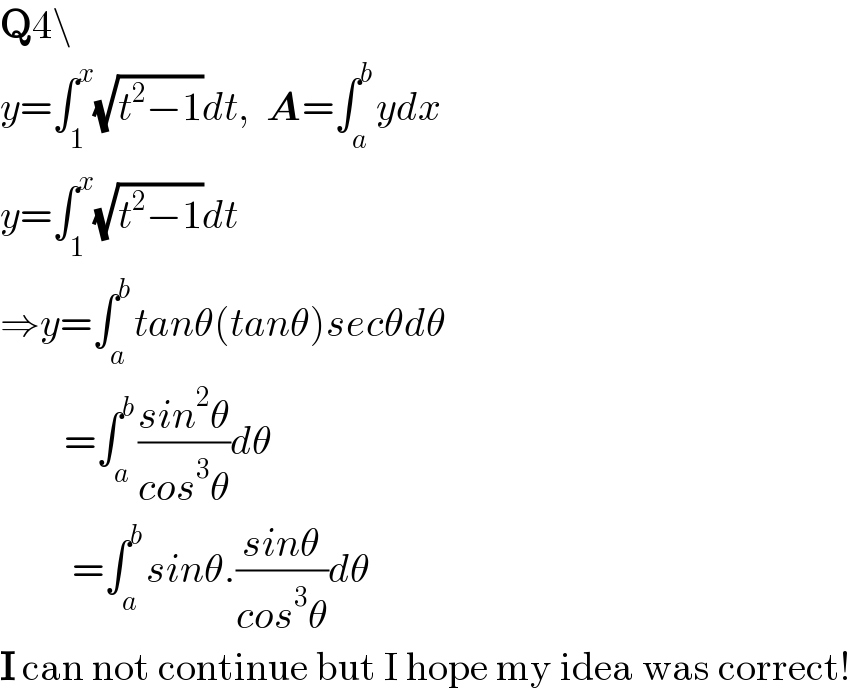
Question and Answers Forum
Question Number 146784 by tabata last updated on 15/Jul/21

Commented by tabata last updated on 15/Jul/21

Commented by tabata last updated on 15/Jul/21

Answered by Cyriille last updated on 15/Jul/21
![Q2\ y=(√x) y=2x−1, x=0 at point of intersecrion, (√x) = 2x−1 ⇒x=(2x−1)^2 ⇒x=4x^2 −4x+1 ⇒4x^2 −5x+1=0 ⇒x=1 or x=(1/4) at x=1, y=1 at x=(1/4), y=-(1/2) y=(√x) ⇒x=y^2 y=2x−1 ⇒x=((y+1)/2) A=∫_(-(1/2)) ^1 y^2 dy −∫_(-(1/2)) ^1 ((y+1)/2)dy ⇒[(y^3 /3)]_(-(1/2)) ^1 −[(y^2 /4)+(y/2)]_(-(1/2)) ^1 ⇒[(1/3)−((((−(1/2))^3 )/3))]−[((1/4)+(1/2))−((((-(1/2))^2 )/4)+((-(1/2))/2))] ⇒(3/8)−((15)/(16))=-(9/(16))](Q146795.png)
Commented by tabata last updated on 15/Jul/21

Commented by Cyriille last updated on 01/Oct/21

Answered by Cyriille last updated on 15/Jul/21

